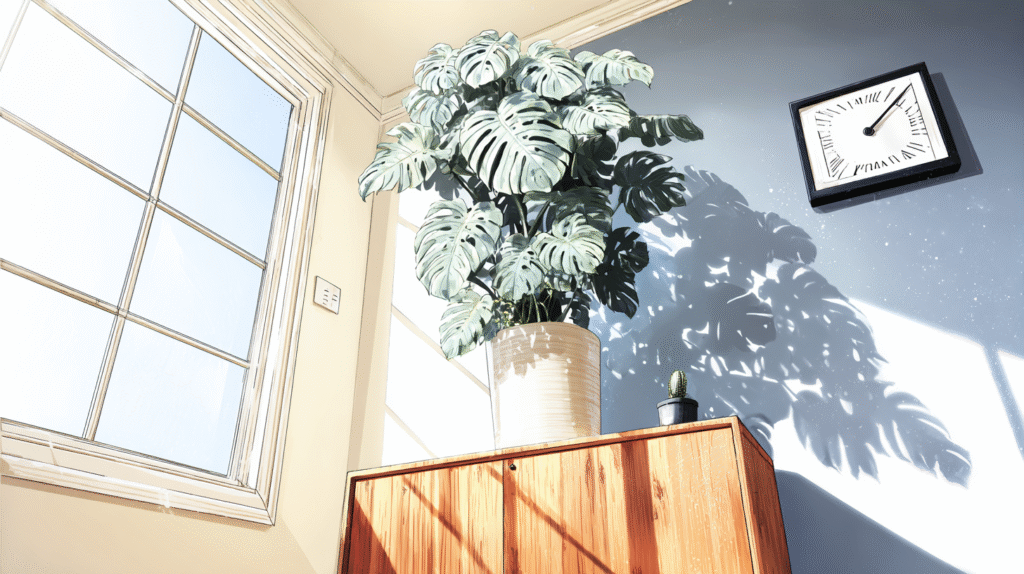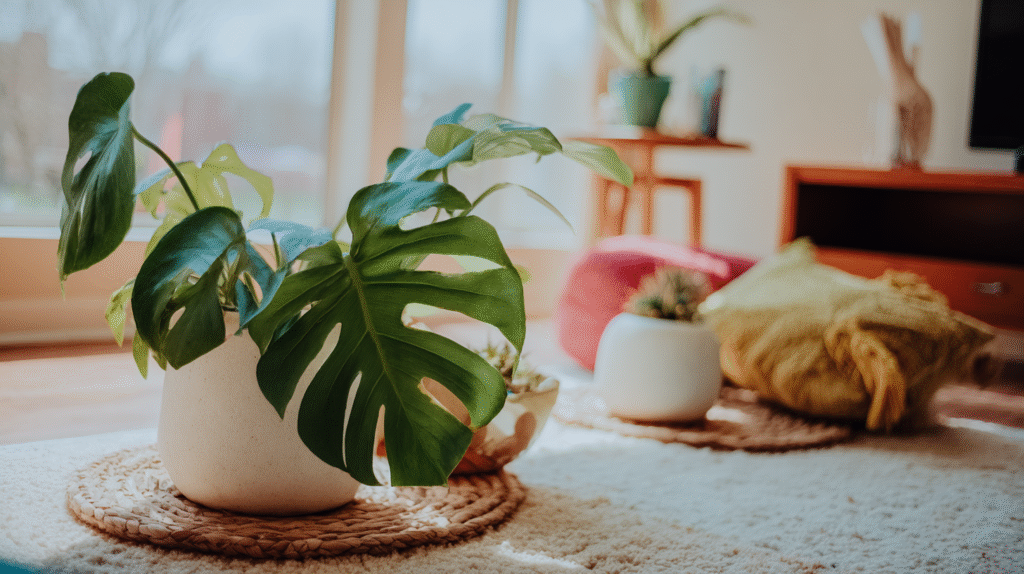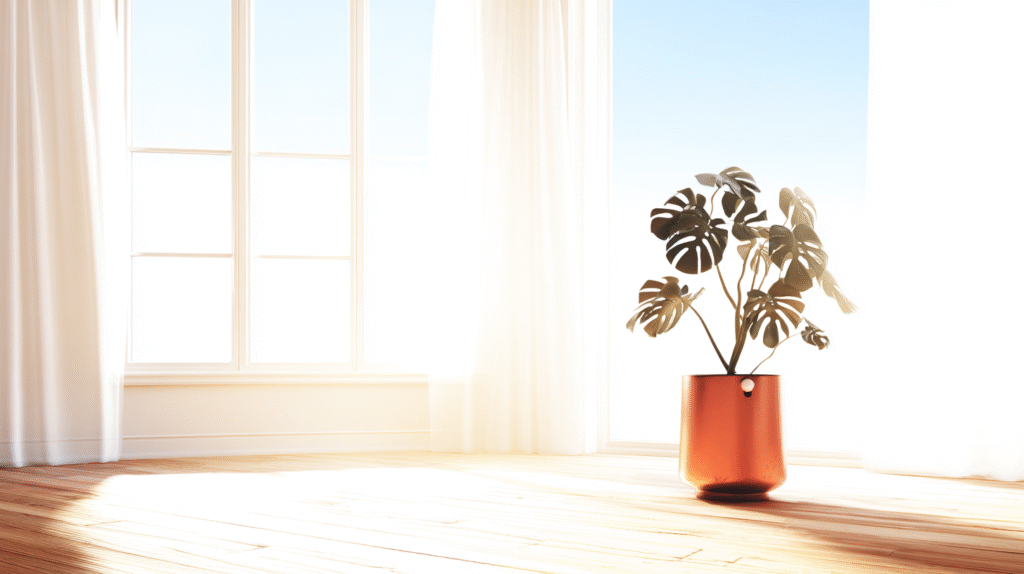My rubber plant journey started with a clearance rack rescue. $7 for a sad-looking Ficus elastica with four droopy leaves and what I now recognize as spider mite damage. “I can save you,” I whispered, like some kind of plant whisperer. Spoiler: I couldn’t. That one died within a month.
But something about those glossy, burgundy leaves haunted me. So I tried again. And again. Fast forward three years, and my living room is dominated by a six-foot rubber tree that started as a $15 grocery store impulse buy. People literally ask if it’s real because it looks too perfect to be true.
Turns out, rubber plants ARE low-maintenance… once you understand their three non-negotiable needs. Nail these, and you’ll have a plant that grows like it’s on steroids. Mess them up, and you’ll be sweeping up leaves like it’s autumn indoors. Here’s everything I learned the hard way.

Why Rubber Plants Are Actually Worth the Hype
After killing that first clearance rescue, I almost gave up. Why bother when pothos exists? But rubber plants have this presence that other houseplants don’t. Those thick, glossy leaves look like they were polished by hand. The burgundy varieties literally glow in afternoon light. And when they’re happy? They grow FAST. Like, noticeably bigger every few weeks fast.
Plus, they’re one of the few plants that can become a legitimate indoor tree without needing a greenhouse. My big one is basically furniture at this point. Can’t say that about my pothos collection.
The Three Things Rubber Plants Actually Care About
After trial and error (emphasis on error), I discovered rubber plants are only picky about three things:
1. Light (More Than You Think):
Every care guide says “bright indirect light” like that means something. Here’s what actually works: as much light as possible without direct sun scorching the leaves. My thriving rubber tree lives 2 feet from a south-facing window with sheer curtains.
The one I tried to grow in “medium light”? Dropped half its leaves and stopped growing entirely. Moved it to better light and boom — new growth within two weeks.
2. Watering (The Goldilocks Zone):
Not too wet, not too dry, juuuust right. I water when the top 2 inches are dry but the rest still has some moisture. In my apartment, that’s about every 7-10 days in summer, every 2-3 weeks in winter.
The trick that changed everything: lifting the pot. Heavy = still moist. Noticeably lighter = water tomorrow. This method has prevented both overwatering and underwatering disasters.
3. Consistency (The Secret Nobody Mentions):
Rubber plants HATE change. That time I moved mine to vacuum and forgot to put it back for a week? Dropped three leaves in protest. They want the same spot, same watering routine, same everything. Boring for us, perfect for them.
My Soil Recipe That Actually Works
Regular potting soil = eventual root rot. Been there, done that, bought another plant. Here’s what I use now:
- 3 parts quality potting mix
- 1 part perlite
- 1 part orchid bark
- Handful of charcoal if I’m feeling fancy
This mix drains well but doesn’t dry out too fast. The orchid bark keeps it chunky and aerated. Your rubber plant’s roots will thank you by not dying.
Common Problems I’ve Faced (And Fixed)
Dropping leaves like it’s autumn: Usually overwatering or not enough light. Sometimes both. Check your soil moisture and move it closer to a window. My record is losing 15 leaves in one week. That plant survived and is now my biggest. There’s hope.
Yellow leaves: Old leaves yellow naturally (don’t panic). But if new leaves are yellowing? Probably overwatering. Let it dry out more between waterings.
Brown crispy edges: Low humidity or inconsistent watering. I run a humidifier in winter now. Game changer.
Leggy growth with small leaves: Needs more light. Always needs more light. Rubber plants are secret sun worshippers pretending to be shade tolerant.
Dust magnet leaves: Those big leaves collect dust like it’s their job. Wipe monthly with a damp cloth. Your plant will photosynthesize better and look less like it lives in an abandoned house.
Varieties That Made Me a Collector
Started with one, now have five. It’s a problem.
Burgundy (Ficus elastica ‘Burgundy’): My gateway drug. Those dark red almost-black leaves are stunning. Slightly pickier about light than regular green ones.
Tineke (The variegated beauty): Green, cream, and pink leaves. Needs MORE light than others to keep variegation. Worth the prime real estate.
Ruby (Pink variegated): Like Tineke but more pink. Instagram bait. Actually easier than I expected.
Regular Green: The OG. Fastest growing, most forgiving. If you’re nervous, start here.

Propagation: The Free Plant Hack
One of my rubber plants got too tall for the ceiling (good problem). Instead of crying, I chopped and propagated. Now I have three plants. Here’s how:
Method 1: Water propagation
- Cut below a node with 2-3 leaves
- Let the cut dry for an hour (stops the white sap bleeding)
- Stick in water, change weekly
- Roots in 3-4 weeks
- Plant when roots are 2 inches
Method 2: Direct to soil
- Same cutting process
- Dip in rooting hormone
- Plant in moist soil
- Cover with plastic bag for humidity
- Success rate slightly lower but less work
Warning: The white sap is irritating and sticky. Learned this the itchy way. Wear gloves.
The Seasonal Care Shift Nobody Talks About
Spring/Summer:
Growth explosion time. Water more frequently, fertilize monthly with diluted liquid fertilizer, rotate weekly for even growth. This is when they earn their keep.
Fall/Winter:
Sleepy time. Growth slows or stops. Water way less (I’ve gone a month between waterings). No fertilizer. Don’t panic if nothing happens for months.
Understanding this cycle stopped me from overwatering in winter — the #1 killer of indoor rubber plants.
Repotting Without Drama
Rubber plants like being slightly root bound. I repot every 2-3 years max. Signs it’s time:
- Roots coming out drainage holes
- Water runs straight through
- Growth completely stalled
- Pot literally breaking (happened once)
Go up just one pot size. Two sizes = too much soil = stays wet too long = root rot. Ask me how I know.

Why My Rubber Plant Obsession Continues
That $7 clearance plant I killed? I bought the same variety last year. It’s now three feet tall and pushing out leaves bigger than my hand. Redemption feels good.
There’s something deeply satisfying about a plant that responds so obviously to good care. Rubber plants don’t hide their feelings. Happy = new growth constantly. Unhappy = dropping leaves dramatically. It’s honest. I respect that.
Plus, once you dial in their care, they’re genuinely low-maintenance. I spend maybe 10 minutes a week total on plant care, mostly just checking if they need water and rotating them. For that minimal effort, I get these gorgeous, glossy green sculptures that make my apartment look like an adult lives here.
Your Rubber Plant Cheat Sheet
If you remember nothing else:
- Brightest spot you have (without direct sun)
- Water when top 2 inches are dry
- Don’t move it around unnecessarily
- Wipe leaves monthly
- Be patient in winter
- When in doubt, more light
Three years ago, I couldn’t keep a rubber plant alive for a month. Now I’m that annoying person who posts plant photos on Instagram and gives unsolicited care advice. But my six-foot rubber tree speaks for itself — sometimes the best plants are the ones that teach you patience through killing a few first.
Just maybe start with a healthier specimen than a clearance rack rescue. Learn from my mistakes. Your wallet (and confidence) will thank you. 🌿






